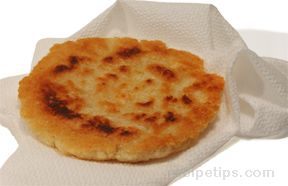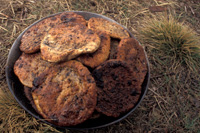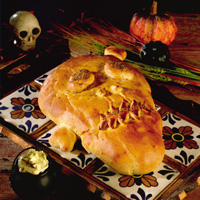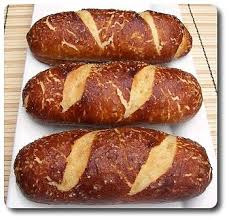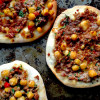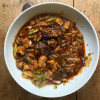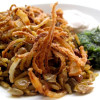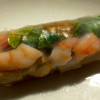Buttered, toasted, sandwiched, sluiced in custard, baked and burnt – bread is a staple in most homes in the UK. From its earliest mentions in the Bible to the latest HD advertisements, it’s still the staff of life and the thing that we look for when we’re looking for that instant hit of comfort; it’s a cuddle in a crust.
But, think of bread and you’ll be thinking of something pockmarked with air-holes or twisted with fluffy nebulae and whorls of grain. It’ll likely have a crusty outer shell, giving way to a light, candyfloss centre. At least, that that’s the British view. Bread from across the globe comes in many forms and most of them are pretty unrecognisable from anything that you’d be serving Lady Bracknell. Let’s take a look at five of the non-breadiest breads from around the world.
1) Bammy Bread
Think Jamaica, think fish and think pancakes. Bammy bread is a Caribbean flatbread, used in savoury dishes, almost like a wrap. Instead of being derived from wheat, it’s made from a tubular root, cassava, which you might know better as tapioca. But this stuff isn’t proved and it doesn’t rise; Bammy bread is usually fried in coconut milk, before being steamed or baked.
http://www.jamaicatravelandculture.com/food_and_drink/bammy.htm
2) Bannock Bread
As the name suggests, Bannock read has its roots in Scotland and was probably carried in many a kilt in its history. However, Bannock bread, like whisky, has travelled far and wide and been embraced by other cultutes – in particular, the Inuits. Like Bammy bread, it’s a flatbread, cooked on a griddle or frying pan. Traditionally, Bannock bread is made from oats and liberally flavoured with currants and spices. Think along the lines of a puffy, sweet oatcake and you’re in the right ball-park.
http://www.artofmanliness.com/2011/04/04/baking-in-the-wild-how-to-make-bannock-bread/
3) Pan de Muertos
This bread from Mexico literally translates as ‘Bread of the Dead’. While it might sound like a follow-up to a George A Romero zombie-flick, this bread is, in fact, more like a cakey version of bread and butter pudding. Traditionally, the main flavouring is star anise and the resulting loaf is drenched in sugar and/or syrup.
http://www.celebrate-day-of-the-dead.com/day-of-the-dead-bread.html
4) Pretzel Bread
Pretzels aren’t just those weird, ET-head-shaped, crunchy things you get when the host has run out of Twiglets. Pretzel bread has a long and illustrious history in the Jewish faith and its roots can be traced back to ancient Israel. It makes a denser-textured, yet lighter-flavoured bread than your standard UK loaf, defined by the salty, savoury finish. Well worth a bash.
http://www.breadworld.com/Recipe.aspx?id=1000
5) Basque Pumpkin Bread
When you think of French bread, you tend to think of those cotton-wool torpedoes, shrouded in a dense crust. However, Basque Pumpkin Bread is more like a savoury cake, with more moisture than you’d expect. On top of that, there’s the background pumpkinicity to factor in; a sort of nutty, half-savoury, half-fruity flavour to factor in. Like all the best breads in a restaurant’s basket, this loaf has its roots in peasant food, when the local serfs would use whatever they could and make it last as long as possible. There are both sweet and savoury versions available, but the less-sweet version is the one to have a crack at.
http://www.glutenfreemadison.org/Recipes/Breads/Bread0004.html
